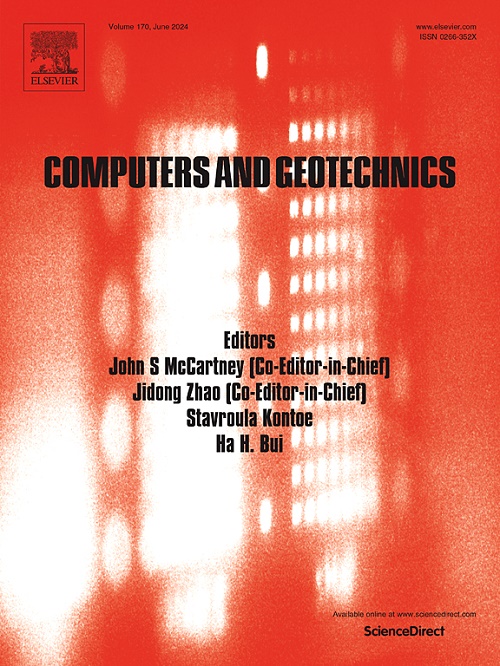Pore water pressure of clay soil around large-diameter open-ended thin-walled pile (LOTP) during impact penetration
IF 5.3
1区 工程技术
Q1 COMPUTER SCIENCE, INTERDISCIPLINARY APPLICATIONS
引用次数: 0
Abstract
This study investigates the pore water pressure (PWP) behavior of soil around large-diameter open-ended thin-walled piles (LOTPs) during impact driving using a large deformation finite-element method. A comparative analysis of the PWP accumulation curves of the soil inside, outside, and below the LOTP tips with different diameters and wall thicknesses during impact driving is conducted under the same hammering solution. The PWP development is dependent on the absolute distance from the pile surface to the location of the soil and the dimensions of the LOTP. The excess pore water pressure (EPWP) accumulates and gradually dissipates, and its level decreases with increasing pile diameter. However, a negative excess pore water pressure (Ne-EPWP) is identified during hammering. Based on the above findings and analyses, a PWP prediction equation for LOTP during driving is proposed, and the predicted curves are compared with the numerical results. The influence of PWP accumulation after penetration of 2d (d is the LOTP internal diameter) does not increase significantly. This equation can provide the initial distribution field of PWP in saturated clay for LOTPs, thereby facilitating pile drivability analyses.
求助全文
约1分钟内获得全文
求助全文
来源期刊

Computers and Geotechnics
地学-地球科学综合
CiteScore
9.10
自引率
15.10%
发文量
438
审稿时长
45 days
期刊介绍:
The use of computers is firmly established in geotechnical engineering and continues to grow rapidly in both engineering practice and academe. The development of advanced numerical techniques and constitutive modeling, in conjunction with rapid developments in computer hardware, enables problems to be tackled that were unthinkable even a few years ago. Computers and Geotechnics provides an up-to-date reference for engineers and researchers engaged in computer aided analysis and research in geotechnical engineering. The journal is intended for an expeditious dissemination of advanced computer applications across a broad range of geotechnical topics. Contributions on advances in numerical algorithms, computer implementation of new constitutive models and probabilistic methods are especially encouraged.
 求助内容:
求助内容: 应助结果提醒方式:
应助结果提醒方式:


